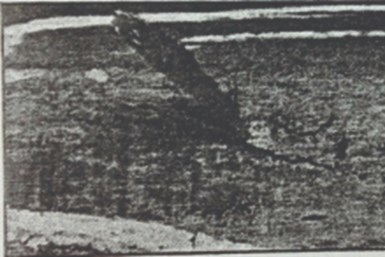Steel Defects Slivers on Rolled Steel Products
Steel defects slivers are, by their very nature, “injurious defects,” and as such rejectable.
#pmpa

Many conditions encountered in the steel bar products that are machined in precision machining shops require some standard or judgement to determine if they are rejectable. Slivers are, by their very nature, “injurious defects,” and as such rejectable.
“Slivers are elongated pieces of metal attached to the base metal at one end only. They normally have been hot worked into the surface and are common to low strength grades which are easily torn, especially grades with high sulfur, lead and copper.”– AISI Technical Committee on Rod and Bar Mills, Detection, Classification, and Elimination of Rod and Bar Surface Defects
Featured Content

Slivers may be caused by bar shearing against a guide or collar, incorrect entry into a closed pass, or a tear due to other mechanical causes. Slivers may also be the result of a billet defect that carries through the hot rolling process. Slivers often originate from short-rolled out point defects or defects which were not removed by conditioning.
Billet conditioning that results in fins or deep ridges has also been found to cause slivers and should be avoided. Feathering of deep conditioning edges during conditioning can help to alleviate their occurrence. Slivers often appeared on mills operating at higher rolling speeds and mills without proper speed control.
As the sliver is an uncontrolled deviation in finish and can injure the workman by contact, these are rejectable to the hot mill under ASTM A29 paragraph 8.1: “The material shall be free of injurious defects and shall have a workmanlike finish.”

As cold-finished, ASTM A 108 Paragraph 9.1 allows for rejection as follows: “Within the limits of good manufacturing and inspection practices, the bars shall be free of injurious imperfections which, due to their nature, degree or extent, will interfere with the use of the material in machining or fabrication of suitable parts.”
Slivers are often mistaken for shearing, scabs and laps. Slivers can be differentiated as they are always attached at one end, rather than their full length.

How slivers present under a microscope. Note decarburization (white appearance).
RELATED CONTENT
-
Context — The Missing Key to Workforce Development
Upskilling your current workforce is as important as finding new talent. To expose them to experiences that encourage them to become problem-solvers is imperative.
-
Quality — A Better Definition for Manufacturing
Quality is a critical factor in manufacturing. Has the definition changed over the years?
-
Craftsman's Cribsheet: How Sulfur and Manganese Improve Machinability
Because manganese and sulfur are intentionally added to the steel, manganese sulfides are present in the steel and at the edge of the tool where they optimize our machining process.





